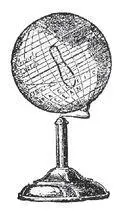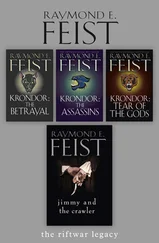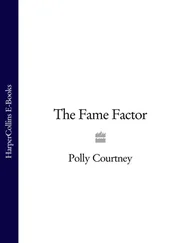“I would love to see that.”
“One of these days, perhaps. We like to get to know our pages for a while before we let them work with the Special Collections. Some of those objects are quite . . . powerful.”
If these were really the objects that inspired the famous fairy tales, then powerful was a good word, I thought. I tried to imagine what it would feel like to touch the spindle that inspired the story of Sleeping Beauty. When I was six, my mother took me to see Tchaikovsky’s Sleeping Beauty at Lincoln Center—that’s when I fell in love with ballet and fairy tales. How I wished my mother were still alive! I would love to see the look on her face when I told her about the collection.
If only I’d known about the collection when I was writing my paper for Mr. Mauskopf’s class! I wondered what he thought about all this. I hoped I would get to see the collection soon. I would have to work hard and show Doc and the others that I was trustworthy.
“Well, that sounds amazing. I would love to work down there,” I said.
“Patience,” said Dr. Rust. “In the words of the Akan proverb, ‘One eats an elephant one bite at a time.’”
Chapter 5:
Peculiar patrons and boots that don’t work


I got my first paycheck two weeks later—enough to replace my sneakers and even a few clothes I’d missed after Hannah left for college. I was working three shifts a week, two after school and one on Saturday.
I spent the next few shifts on Stack 5 (V T: Tools), Stack 4 (IV M: Music), and Stack 7 (VII FA: Fine Arts). It was fun to roll out the racks of paintings and see the mosaic of styles side by side. Cubist portraits rubbed elbows with sentimental domestic scenes and heroic landscapes. The sculpture was very heavy, which made it harder to deal with. Fortunately, Ms. Callender assigned us to the stacks in pairs, so there was always someone to help me, usually Marc or a quiet, burly guy named Josh.
After a few weeks at the repository, I found myself looking at everything differently—ordinary things, like chairs and windows and hot dog stands. I noticed their shapes; I noticed what they were made of. I noticed how they worked. I noticed the different doors in my neighborhood, the carved oak doors on the brownstones and the lacy iron gates on the apartment buildings and the graffitied metal gates on the shops. Objects would remind me suddenly of other objects, often ones in the collection: the fountain in front of the Plaza Hotel was like an egg cup on Stack 9, my father’s bicycle helmet had the same built-for-speed curves as a record player on Stack 4. I felt as if I had new eyes. My father himself still hadn’t found time to come visit. His loss, I told myself.
After I caught a potentially serious error on Stack 9—Josh was about to misshelve a lead-smelting cauldron from Stack 5 (V T: Tools) with the saucepans in the kitchenwares section on Stack 9 (IX HG: Household Goods)—Ms. Callender decided I was ready for the Main Examination Room, the MER.
My first shift there was on a cold, bright Saturday. I’d never been in the MER on a sunny day. When I opened the door from the dim hallway, I could hardly believe I was in the same building, or any building at all. Sunlight poured in all around me, filtered through leaves and blossoms and bare tree branches. It sparkled off streams and waterfalls and snowdrifts. It gleamed on wet rocks and the wings of blackbirds.
After a moment, I realized what I was looking at: not an enchanted grove, but the famous Tiffany windows. All four sides of the MER were paneled with forest scenes. To the north was winter, with frost-rimed rocks and black branches against a bright sky. To the east, spring: crocuses, the barest glimmer of green, blossoming trees dropping petals that seemed to twist and float. To the south, summer: layer upon layer of green, with birds peeking out here and there and a pair of deer stooping to drink from the mossy stream. And to the west, fall in all its blazing yellows and reds. It was the most beautiful thing I’d ever seen.
After a minute I noticed Ms. Callender beckoning from the center of the room, where the dumbwaiters and pneumatic tubes came together behind the magnificent carved wood partition.
She smiled at my expression. “Pretty, aren’t they? I love it up here. Tiffany really knew what he was doing,” she said.
“It’s gorgeous.” I thought of my father again. His loss, that was for sure!
“Well, let’s get you to work. You can sit at the desk today to get the hang of things. You’ll be giving the patrons their items when the pages send them from the various stacks. And every half hour, you’ll do a collection round—take the cart through the room and pick up any items the patrons are done with.”
I expected a library hush in the MER, but it was fairly noisy, especially in the carved staging cage where we three pages were working. The radiators hissed like lovesick lizards, the dumbwaiters chimed when they arrived, and the pneums came thumping and banging into their baskets like baby meteorites, while all around us the windows shimmered and glowed. I kept staring at them and losing track of my work.
Sarah, a plump blond page, sat on a swivel stool by a long, knotted row of pneumatic pipes, at least a dozen of them. Whenever a pneum fell into the basket at her elbow, she would pop it into one of the pipes, scooting up and down the row on her wheeled stool to find the right pipe—each one led to a different stack. She worked so fast it made me dizzy to watch her. I was glad I didn’t have her job.
It was fascinating to see the patrons in person. I remembered some of their names from the call slips I’d run in the stacks downstairs. They all wore white cotton gloves, which made them look strangely formal.
The man from Dark on Monday Productions came to claim another doublet. He was shorter than I’d imagined.
In the back of the room, under the winter windows, a couple of homeless-looking people had settled in. One of them had half a dozen shopping bags and was dozing, head down at the table.
“Is sleeping allowed?” I asked Ms. Callender.
She glanced over. “It’s fine—that’s just Grace Farr. Sometimes people come in to get warm in the winter. You can let them sleep unless they’re snoring and bothering the other patrons. If you have any trouble, ask Anjali for help—or send me a pneum. I’ll be downstairs on Stack 6. But you won’t have trouble with Grace. She’s a friend.”
“That’s good,” I said. I was glad they had a place to get warm.
After half an hour, Anjali sent me out with a cart to collect the items the patrons had finished with. The rumbling woke the sleeping patron—Grace Farr—as I went past her. She looked up at me and I recognized her pale gray eyes. She was the woman with the shopping cart, the one I’d given my sneakers to! “Hello,” I said, startled.
“Hello again.” She winked. Then she put her head back down on the table, and I continued my rounds.
My favorite patrons were a pair of elderly men in threadbare but well-pressed suits. They requested a magnificent eighteenth-century Russian chess set, carved from walrus ivory, and took it to a corner table under the autumn windows, where they spent the rest of my shift playing an intense game.
One patron, a short man with a neatly cropped beard, was doing some sort of work with globes. He requested half a dozen and lined them up in the middle of one of the long tables under a lamp, where he twirled them this way and that, peering at the continents through a magnifying glass and taking notes. He seemed at home in the MER. He would stop to exchange a word or two with the chess players on his way to retrieve a new globe. He kept looking over at Anjali.
Читать дальше














